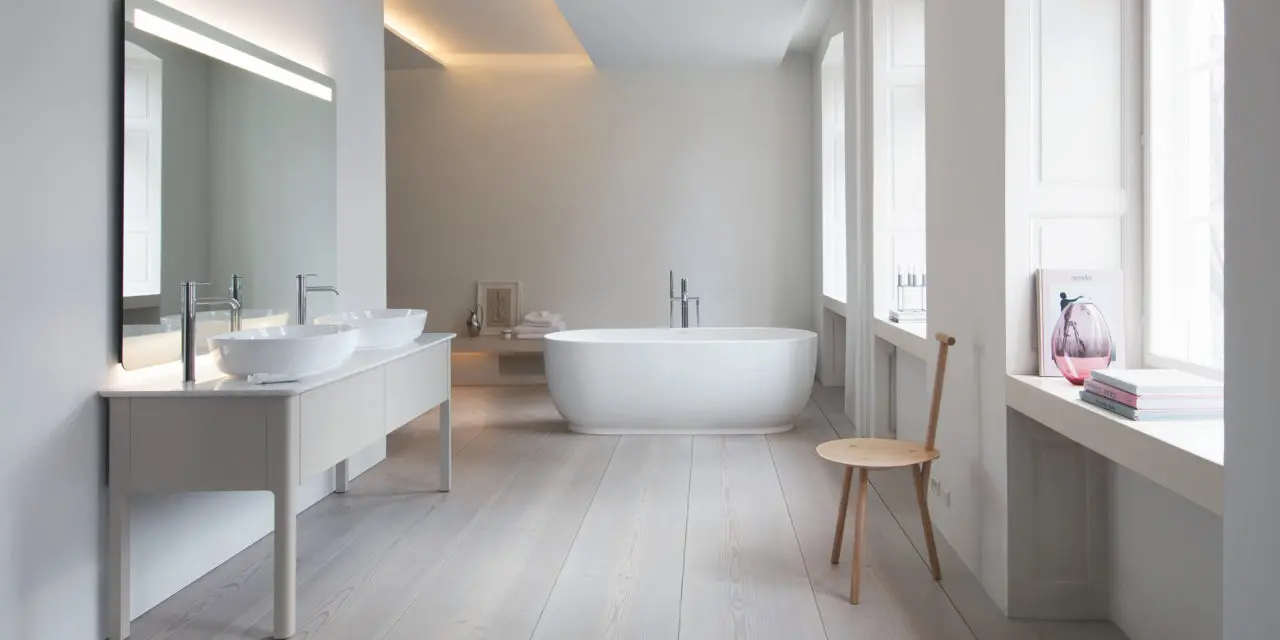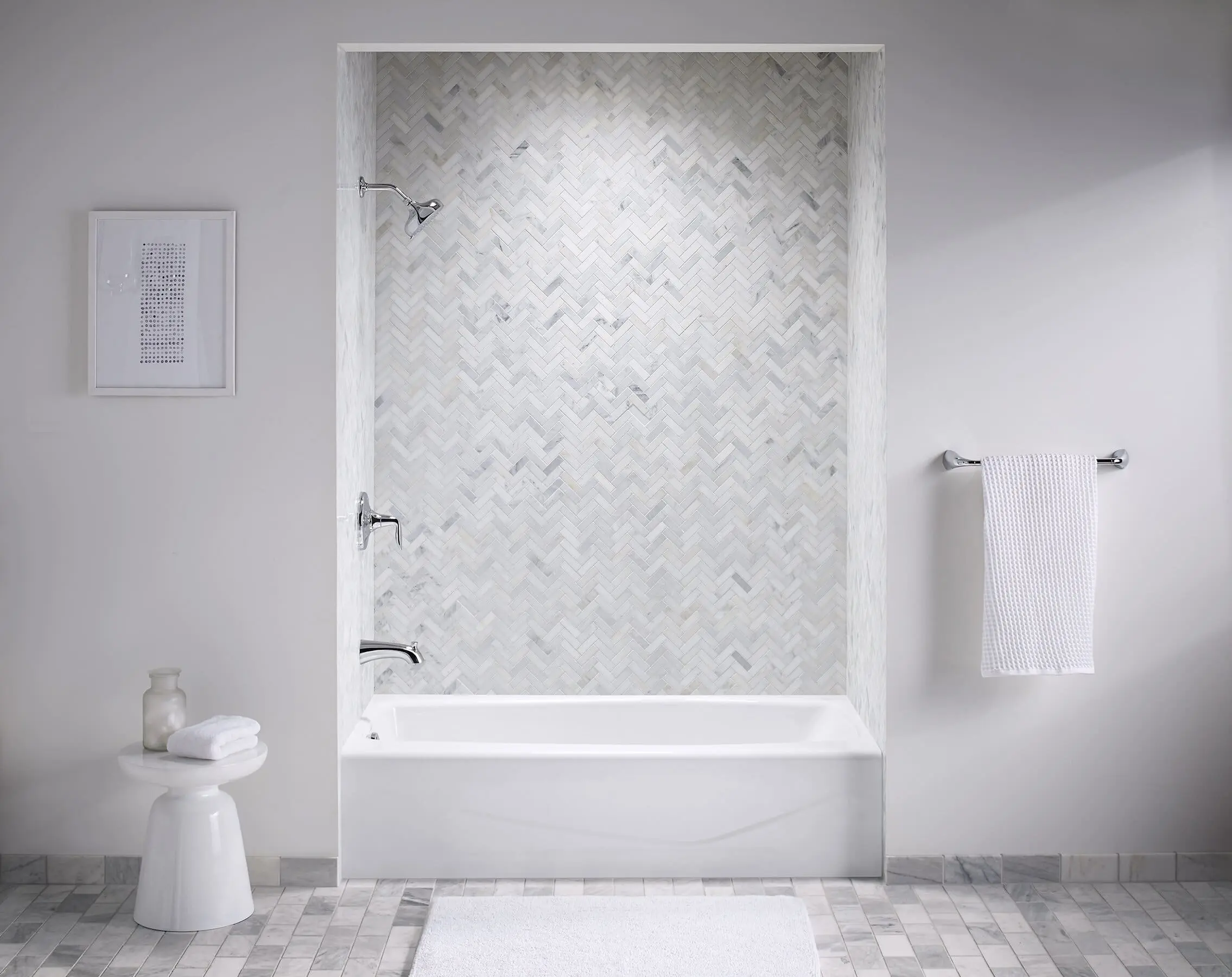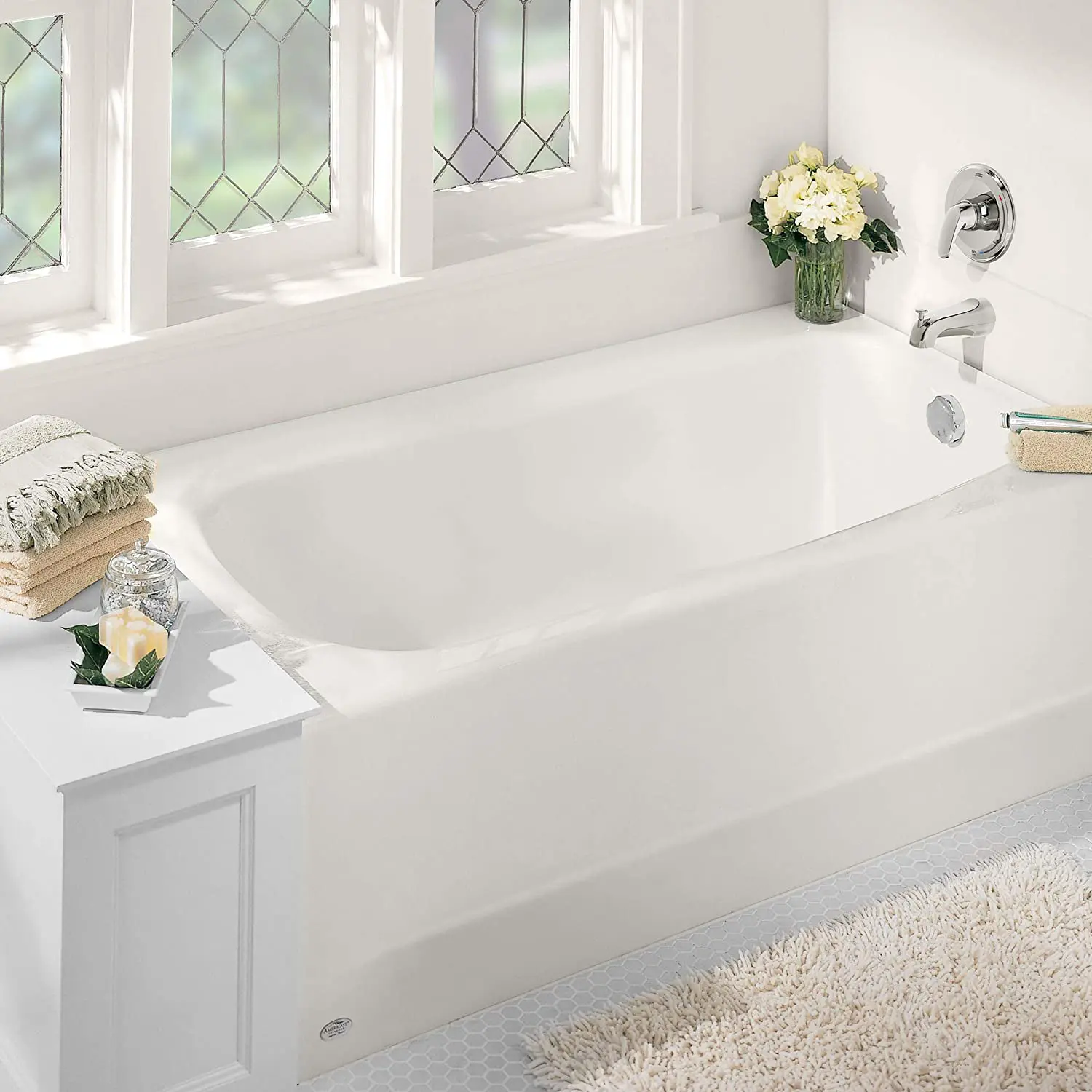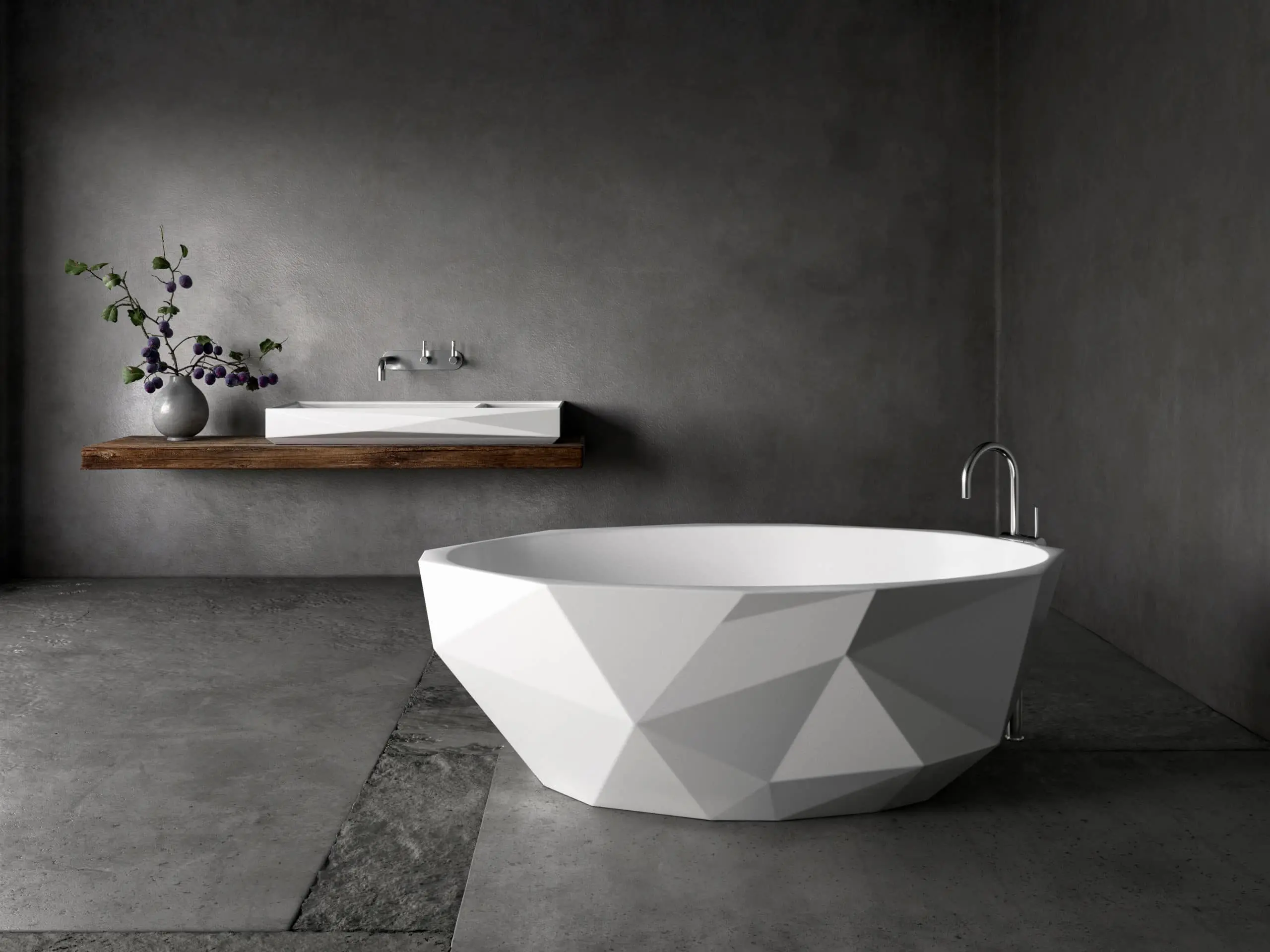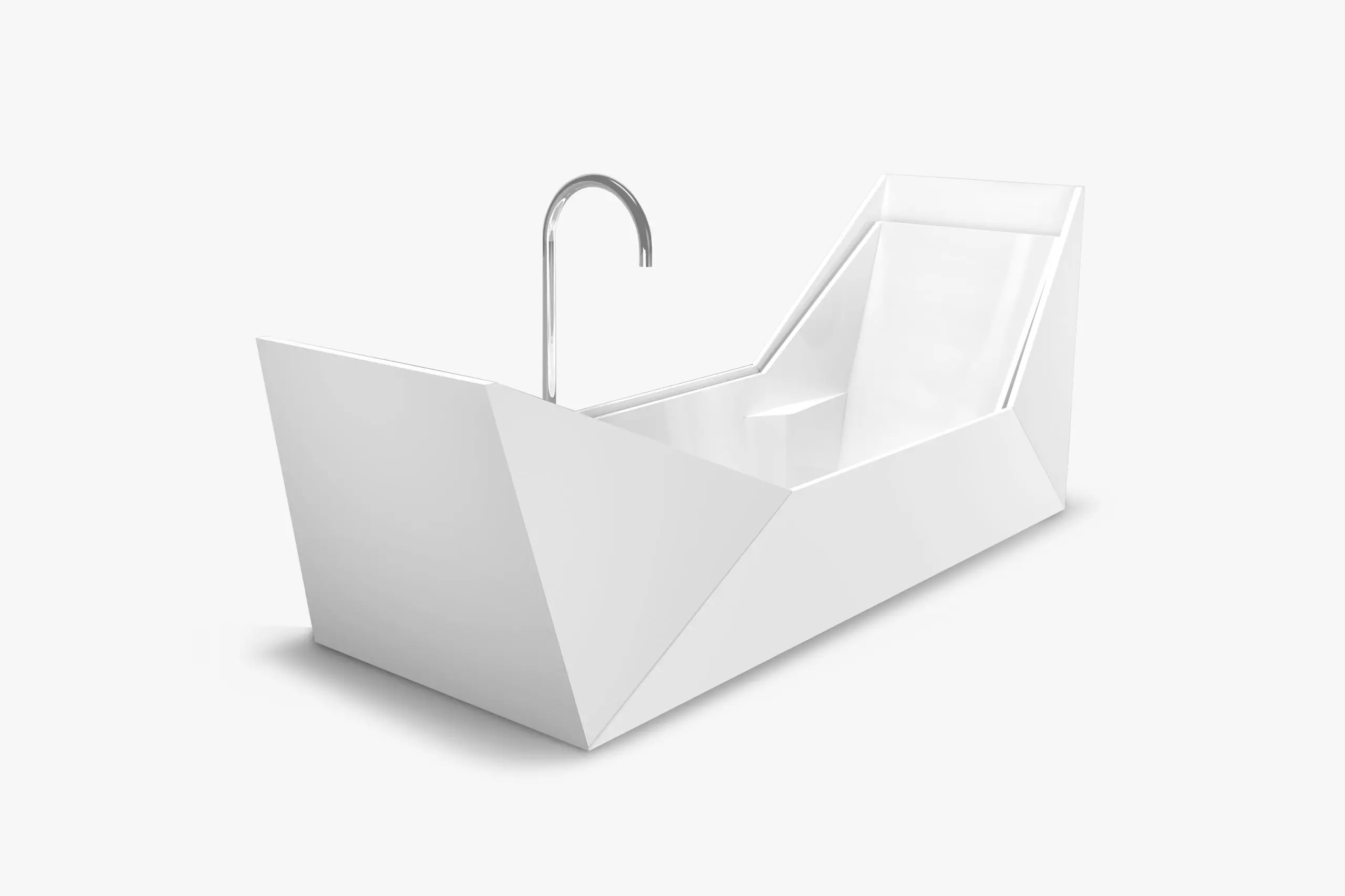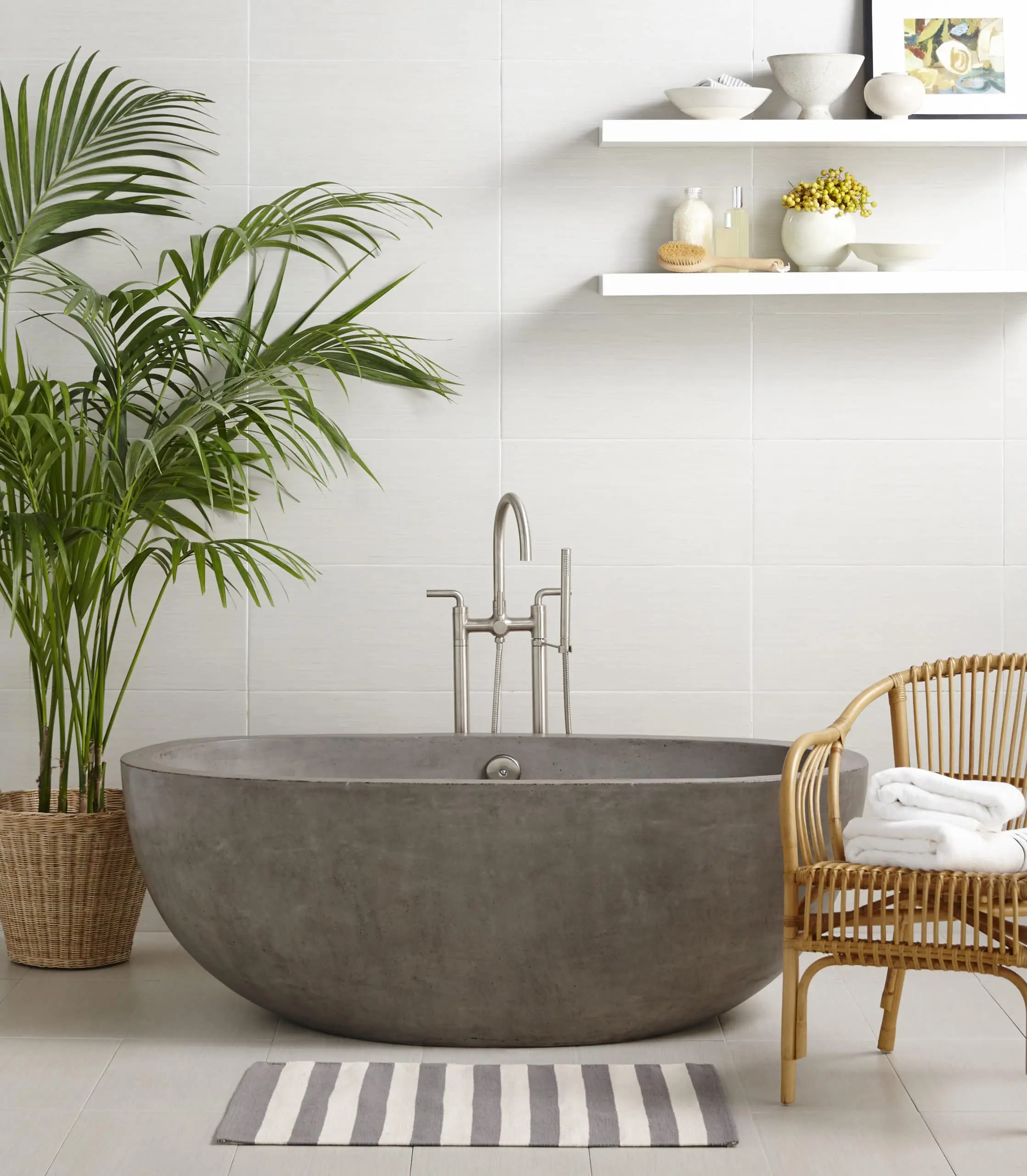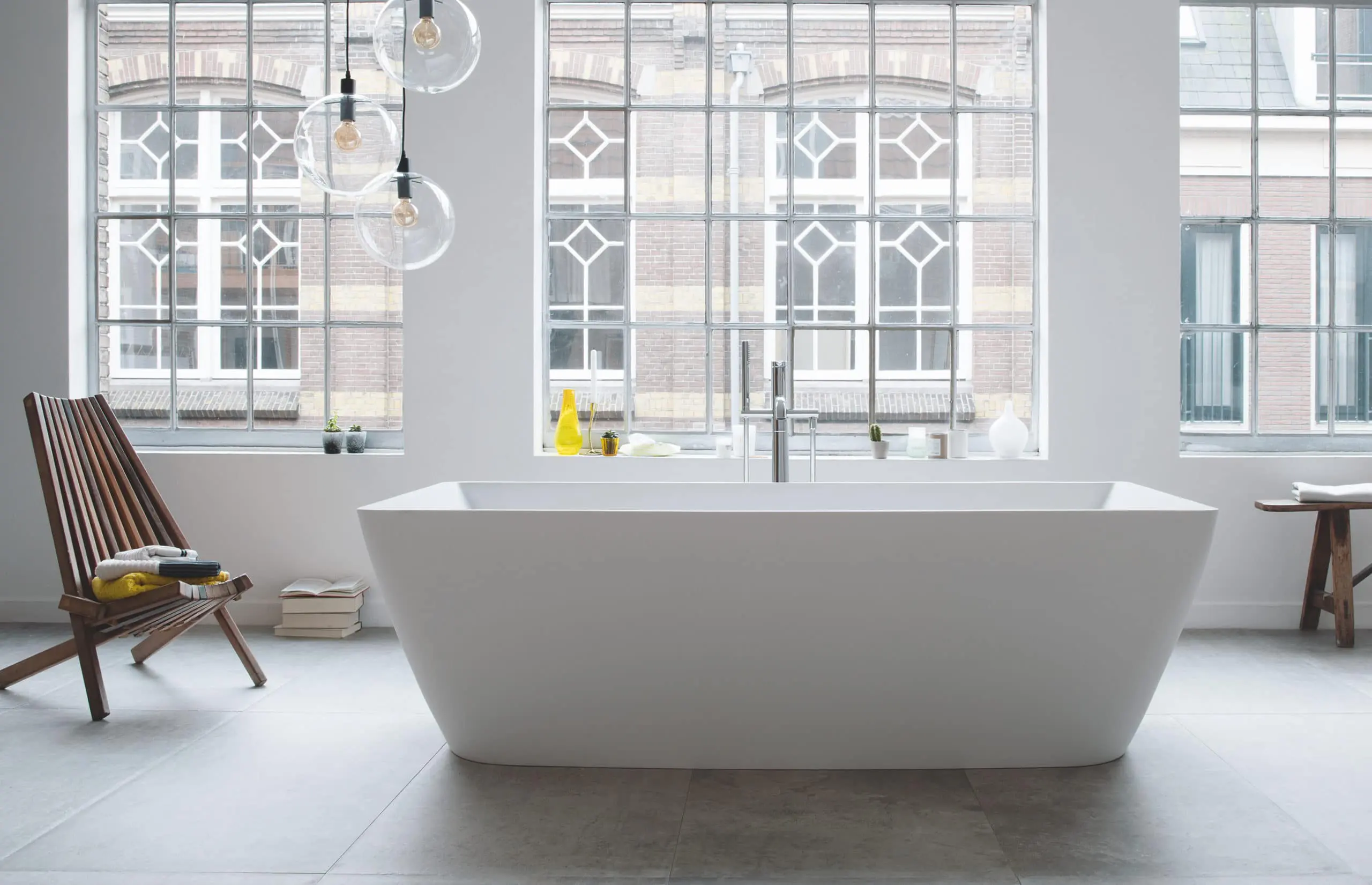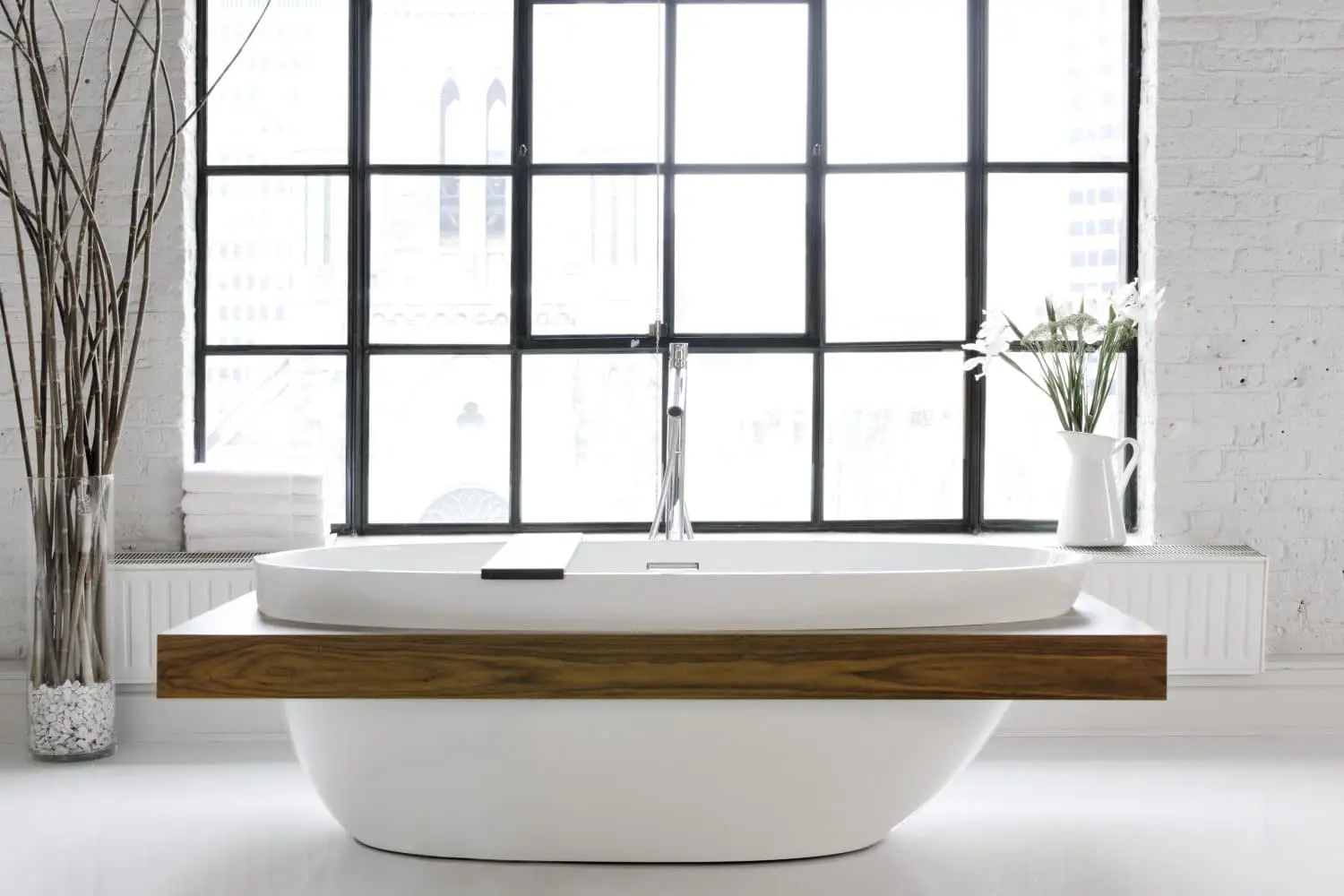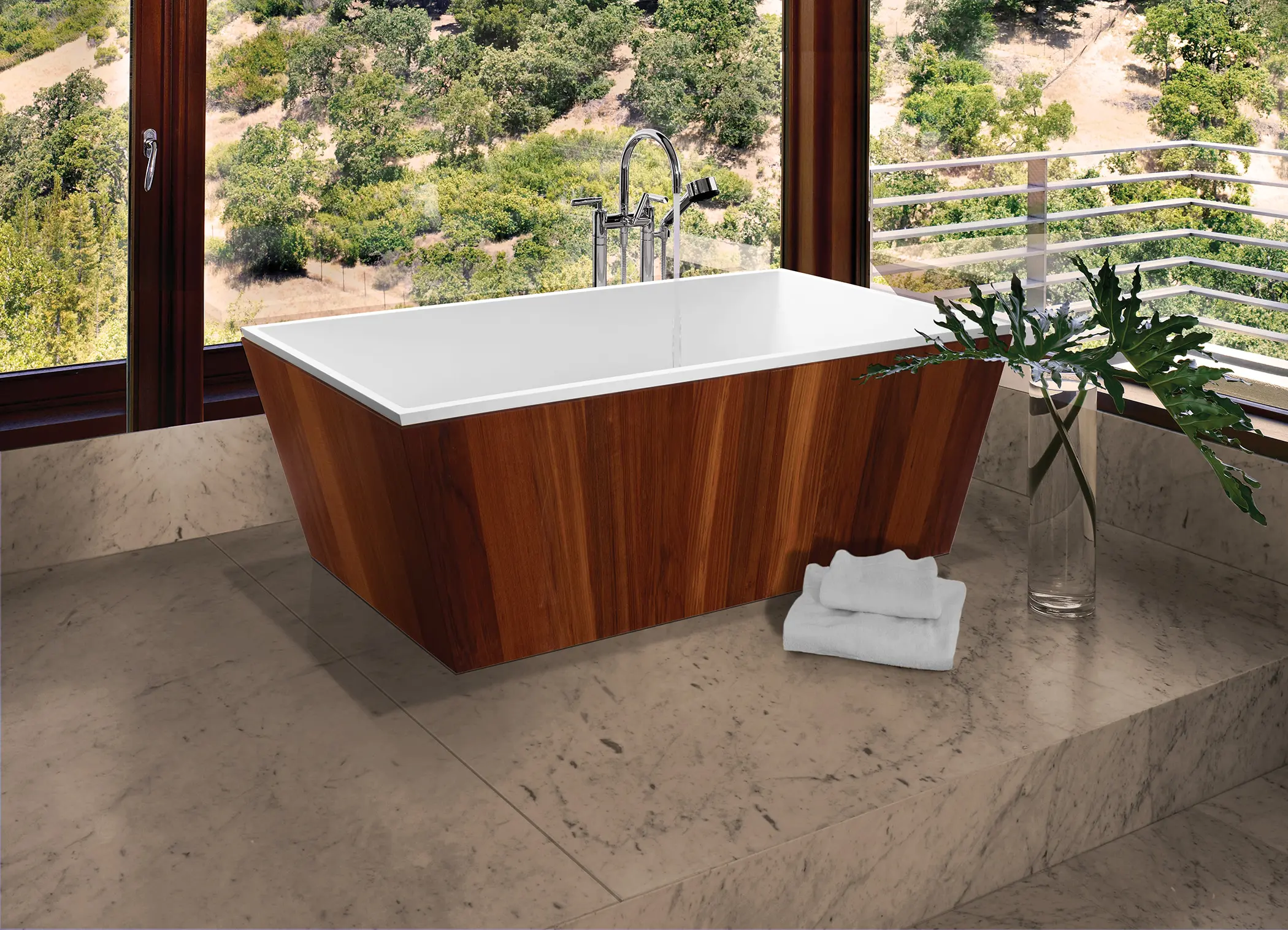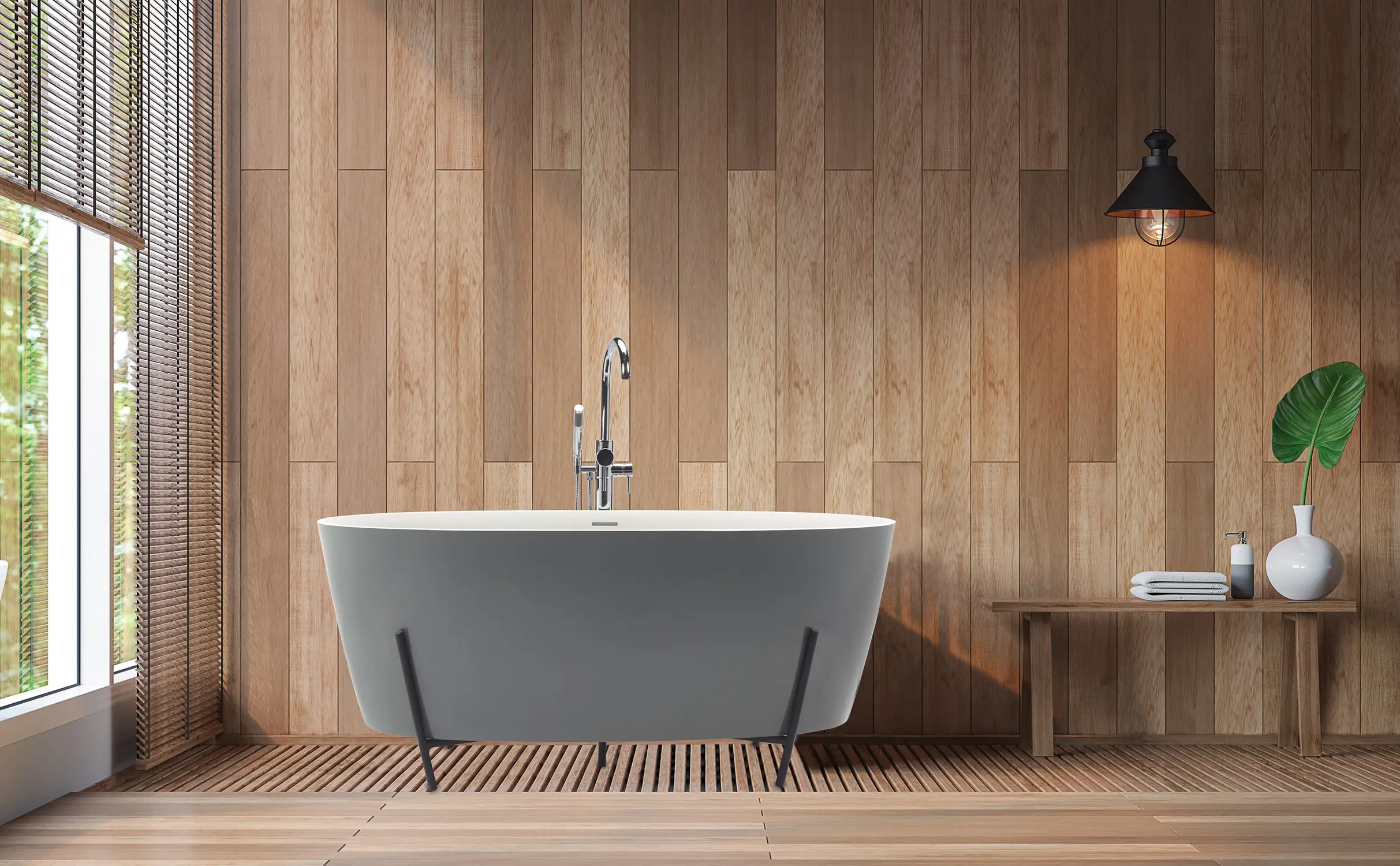Some of the links in this article are affiliate links, meaning at no additional cost to you, we will earn a commission if you click through and make a purchase. Thank you for helping us continue to bring you great content.
Image: Luv collection, courtesy Duravit
By Kim Cook
In the great debate over which is more eco-friendly—showers or bathtubs—showers tend to win. The argument’s made that with low-flow shower heads and the assumption that we generally don’t shower for more than a few minutes, showers use way less water, whereas we typically fill our bathtubs to about the 20-30 gallon mark. You’d need to stand under the shower for nearly half an hour to use that much, and you would be pretty wrinkly at the end.
But bathtubs are still highly desirable in new and reno homes. According to the National Kitchen and Bath Association, owners and builders are opting for large showers in the principal bath, and tubs in secondary bathrooms. The idea is that quick showers are part of the daily routine, but for children, guests and those looking for a nice long soak, tubs are still desirable bath elements. NKBA also reports that freestanding tubs are most popular, chosen by 87% of professional builders in a recent survey.
In both the freestanding and drop-in models, there are eco-sensitive options. Cast iron is recyclable, though it inherently has a long life since it resists scratches, cracks and chips thanks to its density. Plus, it holds heat well, which means it takes less energy to work well for you and makes bath time more comfortable. Then there are eco-friendly bathtubs that aggregate natural and recycled materials like crushed marble, concrete and mineral stone. Acrylic, on the other hand, may use some manufacturing processes that can be toxic, so you’ll want to do your research before purchasing a tub comprising the commonly used material. Luckily, there are brands out there who are making their own eco-friendly alternative composites using quartzite and bio-resin, for example. Here are a few to consider, in all of these categories.
MIGHTY METAL
The cast iron tub was invented in the 1880s, and there are many who believe it’s still the purist’s bath. Iron or steel tubs aren’t lightweights, of course; they average between 300 and 500 pounds without water, so consideration must be given to the placement. Concrete flooring is ideal, but sturdy wood joists will also provide adequate support. Cast iron’s environmental positives include their excellent heat retention when filled, their longevity, and their high resale and recycle value.
KOHLER
Kohler’s commitment to sustainability extends to Environmental Product Declarations (EPDs), which means you can request a declaration of the materials used and how they impact the environment from conception to the end of the product’s lifecycle. It’s one part of the brand’s eco efforts, which encompass a goal of having a net zero environmental impact by 2035 as well as extensive social-impact initiatives including clean, safe water for all, as outlined in UN Sustainable Development Goal 6: Clean Water & Sanitation.
One such product that offers an EPD, which can earn you LEED credits, is the Villager Alcove Soaking Bathtub, offering a durable option in the cast iron category and made using Kohler’s enameled cast iron construction with an easy-to-install apron front.
- Product dimensions: 60” L x 30” W x 14” D; soaking depth: 8.63”
- Available with left or right drain
- Available in three colors: Almond, Biscuit and White
- Product weight: 316 lbs
- Capacity: 33 gallons
- Safeguard slip-resistant floor surface
AMERICAN STANDARD
At American Standard, innovating on the water technology front and minimizing the brand’s environmental impact is at top of mind, along with ethical, safe business practices. They produce shower and sink faucets that conserve water—an important step in the bathroom since a single residential home accounts for 11,000 gallons per year of water waste. But their bathtubs also answer the eco call. American Standard crafts bathtubs using its exclusive Americast Engineered Steel, a lightweight alternative to cast iron that bonds high-quality porcelain with enameling grade steel and a closed-cell structural composite backing for reinforcement. Due to its lightweight characteristics, it’s more cost effective to install, but it still stands up to the durability test. The material also offers insulation that results in excellent heat retention and sound dampening.
The Cambridge Apron-Front Americast Soaking Bathtub is featured on the Sustainable Minds’ Transparency Catalog, where you can search various brands to see whether their materials meet your green requirements.
- Shape: Oval
- Available with left or right drain
- Product dimensions: 46” x 24” x 70”; soaking depth: 14”
- Product weight: 147 lbs; Capacity: 50-60 gallons
- Insulated for heat retention and noise reduction
- StanSure slip-resistant textured floor surface and beveled headrest
- Glossy porcelain enamel finish that is durable and non-porous
ROCKIN’ STONE
APAISER
Australian brand Apaiser is another one to consider; they’ve developed their own nontoxic stone product for bath vessels, called ApaiserMARBLE. It’s made from up to 90% reclaimed crushed marble, a by-product of the marble industry that would otherwise contribute to landfill. The marble is sourced locally to minimize transport emissions. Its sustainability pledge states: “Our commitment to ethically sourced materials and environmentally sensitive production have been a core part of our brand DNA since our inception nearly 20 years ago.” And as such, all of their products are LEED compliant. Plants have specialized air filtration, water and waste management plans, and recycled water is used during the finishing process. No added silica filler or aluminum trihydrate is added, reducing the risk of airborne dust-related illness for employees.
Apaiser has collaborated with several top designers on pieces in the bath collection. There’s a beautiful faceted tub designed by Kelly Hoppen, called Bijoux. LIXIL’s chief design officer Paul Flowers designed an asymmetrical tub, aptly named Chameleon, that can be ordered in a paintbox of vibrant hues like Canary Yellow, Marmalade Orange, All About Aqua, and Fabulous Fuchsia. And WOHABeing’s Sampan tub was inspired by the shape of the traditional Asian boat of the same name. Images courtesy Apaiser
Bijoux: Product dimensions: 1750mm x 103mm x 590mm; Product weight: 364 lbs; Capacity: 108 gallons; Available in 12 colors including Glacier white, Nero black and Luxe Grey
Chameleon A-Series: Product dimensions: 1670mm x 835mm x 700mm; Product weight: 287 lbs; Capacity: 58 gallons; Available in 12 vibrant colors
NATIVE TRAILS
Native Trails’ freestanding Avalon soaking tub is made of NativeStone, the company’s proprietary concrete blend of renewable vegetable fiber jute and concrete. The product is 40% lighter than traditional concrete (which makes shipping less costly and installation less difficult), yet strong and more sustainably produced than traditional concrete because Native Trails uses natural resources, generates less waste and requires less energy than ordinary concrete production. The company has developed a manifesto they term the Native Trails’ Eco-Social Positive commitment to only make products that have a social and environmentally positive influence. Image courtesy Native Trails
- Product dimensions: 21” H x 36” W x 62” L; soaking depth: 15.5”
- Product weight: 538 lbs; Capacity: 65 gallons
- Drain opening: 2” center
- Thick walls provide insulation for heat retention
- CSA, IAPMO, UPC certified
- Available in four finishes: Ash (shown), Earth, Pearl and Slate
DURAVIT
Duravit is a member of the U.S. Green Building Council, the German Sustainable Building Council, and the Environmental Protection Agency’s WaterSense program, among other sustainable organizations. Duravit’s innovative cast mineral material, DuraSolid, also offers product transparency through EPDs. A mixture of raw materials, resin and pigments are combined, casted, and dried and tempered in three stages before being polished. Among bestsellers: the freestanding tub from the Luv collection, a Nordic-inspired collaboration with famed Danish designer Cecilie Manz, with a whisper thin rim and spacious interior. Or for those interested in more right angles, the DuraSquare freestanding tub, with a strikingly precise and streamlined silhouette and silky finish.
DuraSquare Freestanding Tub: Product dimensions: 72 7/8″ x 33 1/2″; Designed with backrest slopes; Comes with overflow and push-open waste; No seams; Image courtesy Duravit
ECO-ALTERNATIVES
WETSTYLE
WetStyle manufactures all of its tubs using a natural, thermo-insulating composite material they’ve created called Wetmar Bio, which has been given the Green Good Design Award by The Chicago Athenaeum. The process uses vegetable-based resin and mineral stone instead of commonly used petrochemical additives, which means you can feel extra good about soaking in those suds. They are lighter in weight than their cast iron counterparts, and boast a seamless design that helps to prevent water leaks. In addition to retaining heat—an energy-efficient plus for any good soaking tub—they’re anti-slip and non-porous, so they resist mold and mildew. Each tub is hand-forged locally in Montreal, where the brand takes measures to minimize waste and its carbon footprint. WetStyle’s commitment to the environment stretches beyond their tubs, with wood furniture remaining formaldehyde-free, California Air Resources Board compliant in regard to its Airborne Toxic Control Measure, and crafted using FSC-certified woods, which sometimes sneak up in their tubs as shelving or surrounds. For example, the BBE-01 Shelf model from WetStyle’s BE Collection, is a freestanding soaker tub designed by Patrick Messier, with a wood surround and bridge in a variety of finishes.
MTI BATHS
MTI Baths in Georgia also has a proprietary material, called SculptureStone. It’s a mixture of ground natural minerals and a high performance green resin made of combined renewable bio-derived and/or recycled content to make a non-porous material with no layers, voids or surface coating. MTI also recycles small granules from the manufacturing process of its engineered solid stone products, mixing them with resin to use as bonding agents in their acrylic freestanding tubs. Cleaning agents in the plant emit no VOCs. Over 40% of the materials used in MTI’s acrylic products, like the soaking tubs, is post-industrial recycled material. U.S.-certified sustainable teak lumber is sourced from reputable suppliers. And, MTI prides itself on creating products that offer hydrotherapeutic solutions that support the importance the brand places on overall health and wellness. The Petra tub has its clean, simple lines wrapped in teak, giving it a warm, inviting look. And then there’s the Elena, which rests comfortably in a powder-coated steel cradle, like a big welcoming bird bath. Images courtesy MTI Baths
Petra: Product dimensions: 62.25″ x 32.25″ x 22.5″; Backrest angle: 105 degrees; Product weight: 300 lbs; Center drain; Capacity: 95 gallons to overflow; Available in two colors


